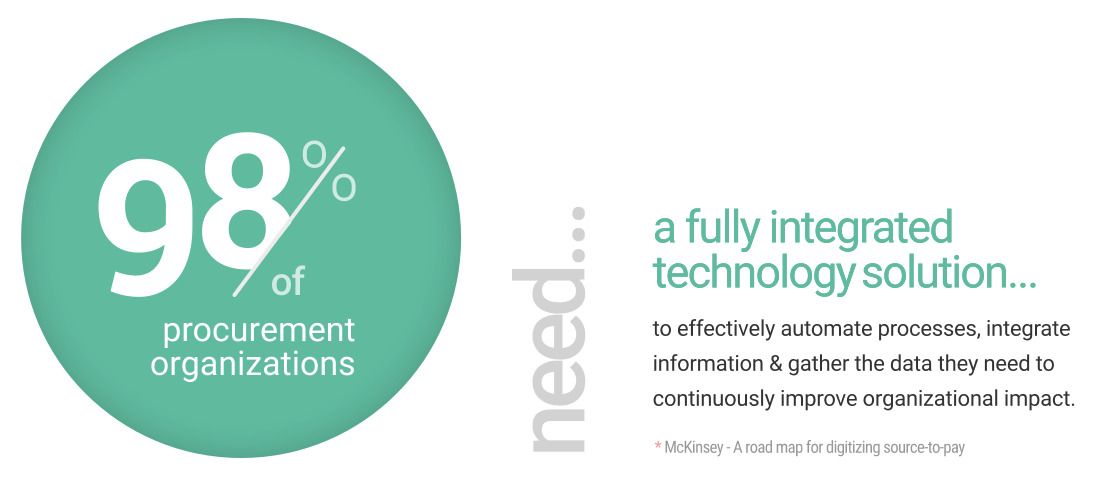Software That Supports the Rising Need for Business Agility
February 26, 2020 | 2 min read

Procurement professionals are faced with increasingly complex challenges every day. This reality results in long hours and missed goals for many procurement teams. However, organizations that leverage a holistic procurement solution are able to quickly scale from a single module to a seamlessly connected ecosystem as needs evolve. This agility allows those teams to better adapt to organizational shifts while maintaining cost and staff efficiency.
POPULAR MODULES TO CONNECT:
Electronic Procurement
Purchase Requisitions
Request For Quotes
e-Auctions
Award Management
PO & Invoice Management
Supplier Catalog Management
Contract Management
Maintain complete control across your procurement infrastructure.
One of the key benefits of a modular architecture is the ability to establish an electronic trail. Since there is one unified system, electronic approvals are gathered before an order release, which eliminates the traditionally arduous “sign off” process.
Similarly, a modular architecture increases control and visibility over the entire life-cycle of a transaction and helps to eliminate communication barriers and build transparent supplier relationships. However, to maximize the benefits of a holistic solution, it is essential to get organized first.
Step 1: Solidify Business Processes
According to Amit Patel, managing director of the enterprise solutions practice at Huron Consulting Group Inc. in Chicago, before implementing procure-to-pay software, the CFO should ensure that business processes are solidified. This effort will ensure that organizational processes are automated and streamlined effectively.
Step 2: Define a Scalable Pilot
Once there is a documented and agreed understanding, Patel suggests documenting which pieces of the process are going to be standard and supported by the software. This includes identifying automation opportunities and processes that should remain manual as the organization integrates the platform into their day-to-day work habits.
Step 3: Consider Data to Migrate
By considering the source and kind of data that will be placed in the system ahead of implementation, organizations can protect data integrity and avoid the need for a manual data cleanse in the future.
Step 4: Verify Platform Ability
Module systems, such as procure-to-pay, have rapidly evolved in recent years. They provide advanced features that many professionals are unaware of.
If you would need help evolving your organization to a modular platform, there are great resources and helpful experts here.
75% of the buyers in the Procurement industry are not currently using e-Procurement software at work.
For more insight,
The Definitive Guide to
Procurement Software
breaks down selecting,
implementing and leveraging a
modern e-Procurement solution.

